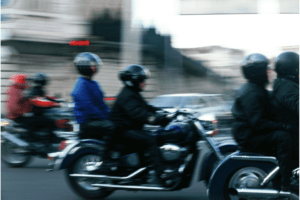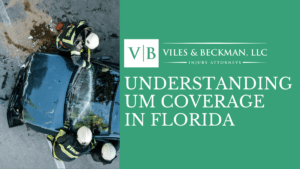
More than 80,000 people are injured in motorcycle accidents in the United States each year, and each of those injuries has the potential to disrupt the lives of those involved. Even in relatively minor cases, a motorcycle injury can result in missed work, hours spent at medical appointments, and challenging recovery. For the more serious cases, a motorcycle crash can result in lifelong struggles against the impact of an injury. If you were injured as a motorcycle passenger, you may be looking for ways to get your life back on track and handle the next steps of seeking treatment and compensation.
Additional Considerations for Motorcycle Passengers
When people discuss injuries from motorcycle accidents, they typically imagine the injured party as the driver. However, carrying a passenger on a motorcycle is a common occurrence, and the passenger has some vulnerabilities that aren’t true for the operator. After all, the passenger has little to no control over the motorcycle, and that impacts how their compensation may be determined in the case of an injury settlement.
While passengers do still have a general responsibility for safety — such as by wearing protective gear required by the law in their state — they cannot be expected to react in any particular way to avoid or lessen damage during a crash. Quite simply, they aren’t the one in control, and any injuries sustained during the accident were outside their power.


Expect More, Receive More: Legal Support That Feels Like Family
Determining Who is Responsible for Damages in a Motorcycle Accident
There are countless ways for an accident to occur, but typically, they’re going to fall into one of two categories: either the motorcycle crashes without involving another vehicle or there is a multiple-party crash. For an individual who has sustained an injury after a motorcycle accident, the type of accident matters a lot.
Motorcycle-Only Accidents
If the motorcycle was the only vehicle involved in the crash, then you will most likely be seeking compensation from the operator of the motorcycle. The person who was driving is responsible for doing so safely, and negligence in operation is a leading cause of settlements in for a motorcycle passenger who has been injured in a crash.
Another possible outcome is that the operator crashed the vehicle because of a malfunction on the motorcycle itself. If there is a faulty part, then the responsibility for injuries may be placed on the manufacturer of the motorcycle or the third-party accessory that did not function as designed.
Multiple Vehicle Accidents
If there is more than one vehicle involved in the accident, the situation can get more complicated, but it also means that the responsibility for compensation can shift or even be shared. The other driver — or drivers, in the case of a crash involving more than two vehicles — will need to be considered for their fault in the accident. If they are found to have behaved recklessly while operating their own vehicles, they may be held liable for the damages, including any injuries sustained by a motorcycle passenger.
Roadway Conditions
A final possibility for responsibility lies on the maintenance of the roadway itself. While maintaining safe road conditions is important for all vehicles, motorcycles are particularly vulnerable to defective and poorly maintained roads. A pothole or loose gravel can spell disaster for a motorcyclist who finds themselves losing control of the vehicle. It is possible that negligence from those tasked with maintaining safe driving conditions is at fault.
Next Steps for an Injured Motorcycle Passenger
The immediate aftermath of an accident can be a disorienting and frightening time. Dealing with the impact of the injury may not leave you with many immediate options. If you are severely injured, getting quick medical treatment is the most important priority. Once your physical safety is secured, there are some steps you can take to help ensure you have the best chance for compensation for your injuries, suffering, and lost time.
Gather Evidence
The most important thing you can do in the aftermath of an accident is get all the details you can. Get the names and insurance details of the people involved — even if that’s just the operator of the motorcycle. If you are able, take pictures at the crash site. If there are hazardous road conditions that led to the crash, take pictures of those as well. Write down everything you can remember about the events leading up to the crash. It is also important to call the police or local authorities who handle vehicle accidents. Their report will be incredibly valuable to future legal proceedings.
Gathering evidence directly from the motorcycle is also important, especially if faulty equipment may be to blame. It is important not to repair the vehicle before a full and thorough investigation can determine whether the equipment malfunctioned.
File a Claim
Just like a personal injury claim in a car accident, the next step is to file a claim. Where you file will depend on the details of the crash. If you are filing a claim against the operator of the motorcycle or the driver of another vehicle involved in the crash, you will file against their insurance company. If you were involved in a hit-and-run, you may be eligible to seek compensation under the operator’s insurance if they have an uninsured motorist policy.
If manufacturing defects or negligent roadway conditions are suspected, it is very important to get in touch with an experienced attorney who has handled cases like these in the past. These cases will be more complicated and likely require expert management.
Reach out right away for a free case evaluation to discuss what to do after suffering injuries as a motorcycle passenger.






